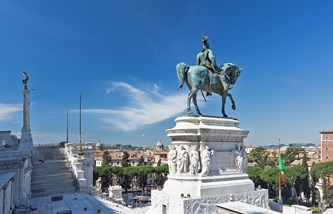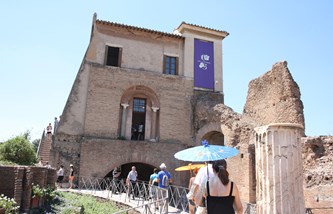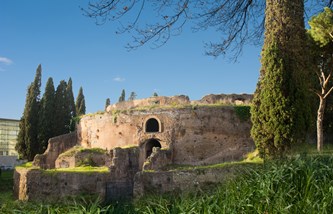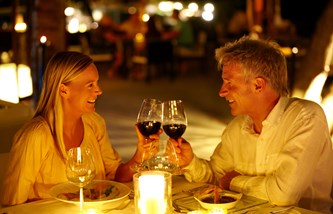Tours

Rome Tourist Card
Rome Tourist Card
Snap up the Rome Tourist Card and you'll get everything you need to explore Rome's top highlights including Colosseum, Palatine Hill, Roman Forum and Hop on/off bus. You can even choose the order you see things in.

Colosseum, Roman Forum & Palatine Hill: Priority Entrance
Colosseum, Roman Forum & Palatine Hill: Priority Entrance
Skip the long lines at the Colosseum with this priority-entrance ticket. This ticket will let you bypass the crowds. And after exploring the Colosseum you can head to the area of the Roman Forum and the Palatine Hill.
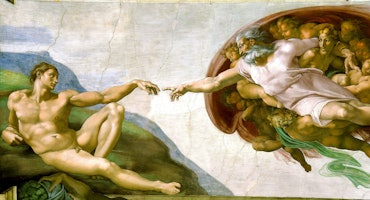
Vatican Museums & Sistine Chapel: Skip The Line
Vatican Museums & Sistine Chapel: Skip The Line
This ticket will make you save stress and time by allowing you to get priority entrance and skip the line. Visit the the countless masterpieces by Michelangelo, Raphael, Caravaggio, Tiziano and the Sistine chapel.
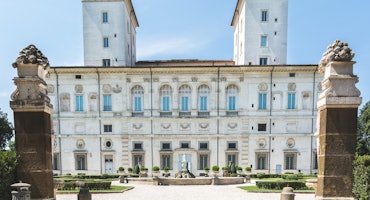
Borghese Gallery: Fast Track
Borghese Gallery: Fast Track
Galleria Borghese is located in the villa of the park Villa Borghese. Admire the architecture and furnishings of this beautiful villa. It is a museum full of art from the Renaissance. The collection includes several sculptures and paintings. Because of limited capacity get tickets for this museum weeks in advance.
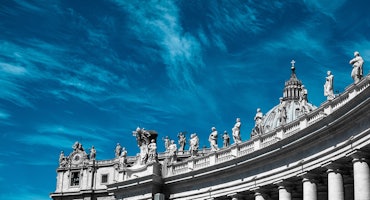
St. Peter’s Basilica: Dome Climb with Guide
St. Peter’s Basilica: Dome Climb with Guide
Get the most out of your visit to St. Peters with a guided tour to climb the basilica’s dome designed by Michelangelo and admire one of the stunning view. After the tour, you can explore the the basilica at your own pace.
Monti
Monti is the most ancient and largest district of the city. In Italian, “monti” means “the mounts”, and that’s because this area includes three of the seven hills of the city center: the Esquiline, the Viminal and the Quirinal. A walk around its streets will uncover picturesque streets and buildings, home to exclusive boutiques, jewelers and antique shops. If you are looking for a special gift or souvenir, you’ll most probably find it here. The district includes all the areas west of the Forum and the Colosseum, up to the Termini Station (north) and St. John in Lateran (south).
This area was crowded during the Roman Empire, but then it declined during the Middle Ages. Once home to poor suburbs, it was completely reconstructed from 1600 onward. Today it’s a thriving, charming and trendy destination. Also, Monti is home to several archaeological findings and, as you will discover below, the place to be for a top class night out.
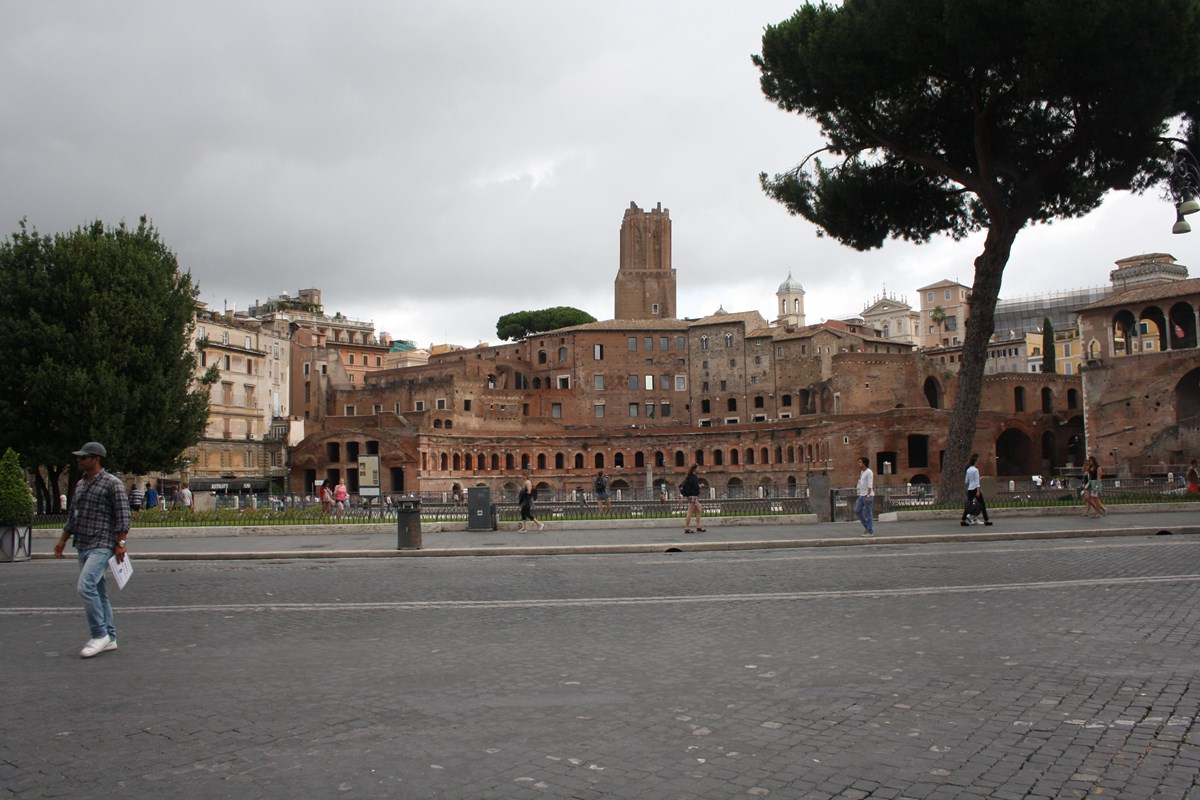
The Streets and Squares Not to Miss
VIA PANISPERNA. Considered by many lovers of Rome to be one of the most interesting and fascinating streets of the city, Via Panisperna cuts the other roads in a unique diagonal path, which has forced the architects to find clever solutions for the buildings situated on every road junction. Here, you will have the breathtaking view of the Basilica of St. Mary Major at the very end, together with many charming buildings covered in ivy. One of the street’s buildings is the headquarters of the Italian Institute of Physics. Here, in 1934, Nobel Prize winner Enrico Fermi, together with some of the most clever minds of the first part of the XX century, developed groundbreaking studies on the slow neutrons, which lead them to build the very first nuclear reactor.
LARGO MAGNANAPOLI. On the square, there is the unique church of Saint Dominique and Sistus, with a facade featuring two sets of stairs, and a Medieval tower, built around the XIII century.
VIA LEONINA. In the middle of the street, you’ll find the famous Borgia’s stairway. While walking up the steps, you’ll pass underneath the arch of a palace that once belonged to the Borgia family, one of the most powerful dynasties of the city, especially during the Renaissance.
VIA URBANA. The street features many restaurants, shops and cafeterias. It is also home to stunning arts and crafts boutiques, including one that creates objects with wax and another that sells artworks made entirely of glass. Here, you’ll find the church of Saint Prudenziana, which was originally built in 145 AD and it was one of the most ancient in Rome. The church was completely rebuilt in the XVI century and it features a splendid mosaic on its apse.
VIA DEI SERPENTI. Walking along this street, you’ll enjoy the view of the Colosseum in the background, while passing beside quite a few interesting buildings. The asymmetrical positioning and architectural styles of many of those palaces is definitely eye catching.
PIAZZA MADONNA DEI MONTI. In the middle of the square, there’s the Fountain of the Holy Mary of the Mounts, built by Giacomo Dalla Porta, the famous architect and artist, who designed many of the fountains of the city and many buildings and churches. One of his greatest achievements is the dome of St. Peter’s.
VIA DEI FORI IMPERIALI. Probably one of the most scenic roads of the city, it was built in 1932. Walking along the road, which begins on Venice Square, you will see some of the most famous landmarks in Rome: the Forum, the Colosseum, the Trajan Market and the Basilica of Massenzio. The road is tree-lined with domestic pines, the typical Roman pines. Every year, on the 2nd of June, the road hosts the parade for the celebration of the Italian Republic Day.
Interesting Facts About Monti
During the Imperial age, the name of this area was “Suburra”, literally “suburbs”, and it was definitely skid row, as it was inhabited by the lower class, together with many criminals. On the other hand, the areas at the top of the hills of Monti were home to many high society mansions, including the one where Julius Caesar was born. As centuries went by, the area was abandoned and declined, mainly because of lack of drinkable water, then the reconstruction process took place starting from the Renaissance. As a reminder of the ancient neighborhood, one of the squares of Monti is called Piazza della Suburra.
Every year, on the 29th of April, the residents of the “rione” (Italian for “district”) Monti (called the Monticians) participate in the procession for the feast of the Madonna of the Mounts, which runs through Via Leonina, Via Urbana and Via del Boschetto. The worshippers carry the statue of the Holy Mary, followed by the local marching band.
Some of the streets of this district were completely pulled down to make room larger ones, following decisions that have been sometimes harshly criticized. For example, part of a road that connected Piazza della Consolazione square with Via dei Fori Imperiali road was demolished in 1980. In the same period, the mayor of Rome decided that the area between the Colosseum and the Constantine Arch had to be closed to the traffic. It was the very first car-free zone in the whole Italian territory.
Sightseeing Destinations in the Neighborhood
The Roman Forum. Rome’s ancient political and commercial center.
Nero’s Domus Aurea. The mythical palace of the Emperor Nero, which was built in the year 64. The palace was destroyed after Nero’s death, but excavations have brought to light some of the surviving and richly decorated rooms.
The Colosseum. The Flavian Amphitheater, which was used for, among other things, bloody games between gladiators and battles between men and exotic animals.
Saint John in Lateran. One of the four papal basilicas. Saint John in Lateran is the oldest of these four churches.
Saint Peter’s in Chains. The church owes its name to the fact that it preserves the actual chains used during the imprisonment of St. Peter. The origin of this worship site dates back to the V century AD. Inside, you can also admire the monumental tomb of Pope Giulio II, created by the genius of Michelangelo.
The Basilica of San Clemente. The church has three levels: the upper (Medieval) one, and two levels below the ground, one belonging to the Roman era and another with the stunning remains of an ancient Mithraic temple.
Restaurants, Cocktail & Wine Bars and the Market Hall
We can’t stress enough how Monti is considered one of the trendiest places to be in the city today, thanks to its boho and hipster atmosphere. Plus, it’s just a short stroll from the Colosseum. While during the day you can enjoy some amazing shopping when the evening approaches it becomes the perfect spot for an appetizer or a drink.
Among the many restaurants and bars, here’s some venues you should definitely check out:
SACRIPANTE GALLERY (Via Panisperna, 59). Once a monastery, this elegant venue has kept a mystic and Baroque style. It’s not only a bar, but also an art gallery and a multi-functional space which hosts book presentations and vernissages.
BLACKMARKET HALL (Via de’ Ciancaleoni, 31). Great food and cocktails, surrounded by art Deco design. This venue is world famous in Rome. Plus, it features a rich live music program.
DRINK KONG (Piazza San Martino ai Monti, 8). Recently opened, it is owned by one of the most legendary barmen of the city: Patrick Pistolesi. The drinks and cocktail selection are definitely top class.
EX GALLERIA MONTI (Via Baccina, 66). This cozy and richly decorated wine bar is the place to be for a nice appetizer. It’s a short stroll away from the Roman Forum. The menu also features sandwiches and hamburgers.
AI TRE SCALINI (Via Panisperna, 251). Very popular among Romans, this venue serves a large selection of Italian wines and delicacies. Great service and live music.
Monti is one of the favorite districts among many artists and local artisans. In Via Leonina, every weekend, there is a market hall where you will be able to find crafts and young independent fashion designers’ stalls, along with vintage and used items, accessories, collectibles, books, LPs, paintings and artworks. The address is Via Leonina 46/48.
